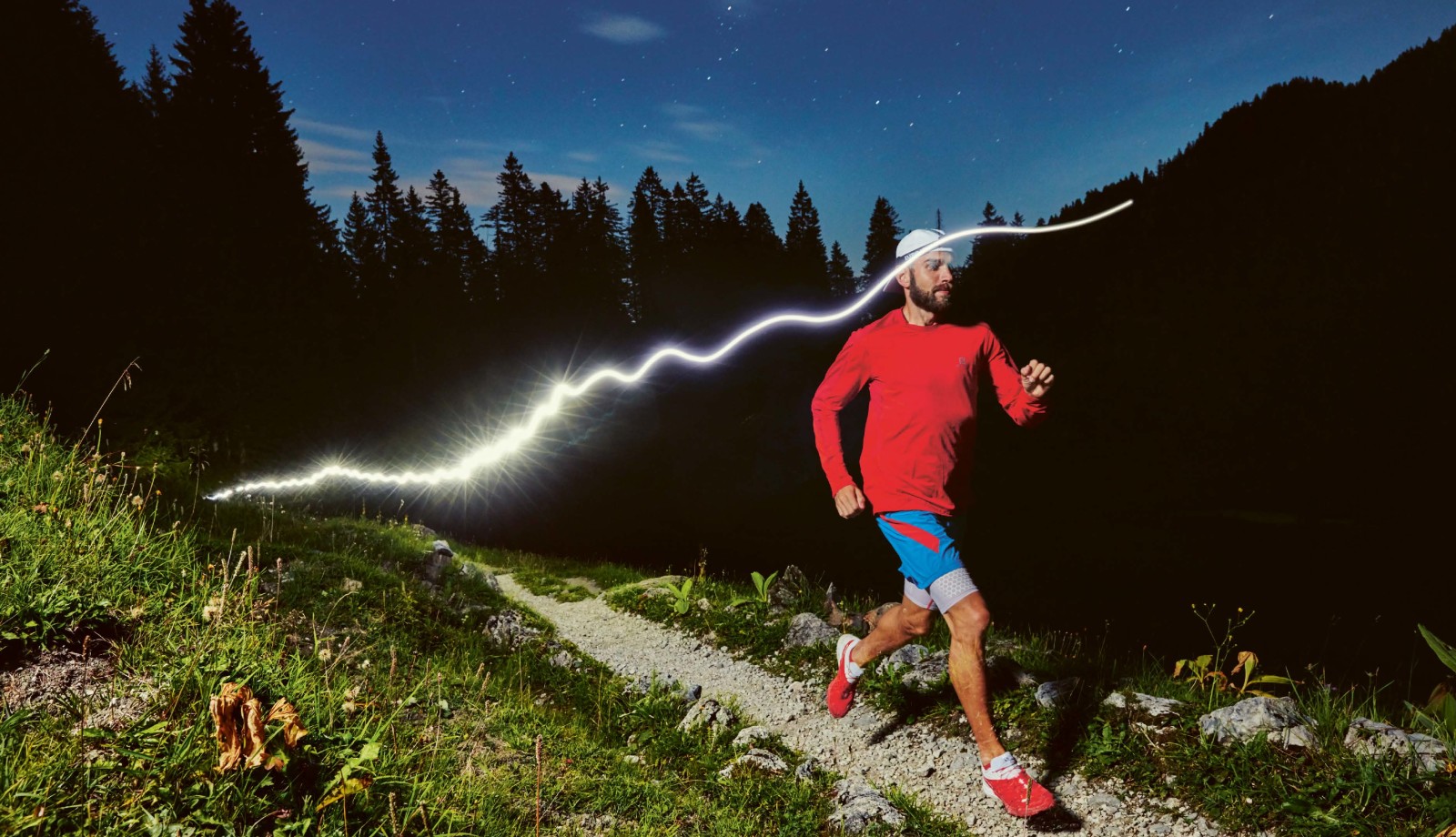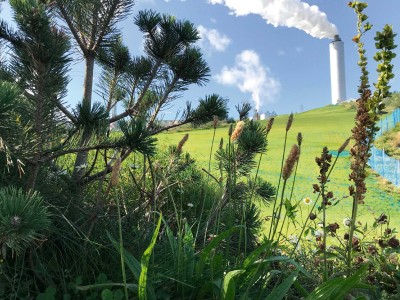
Energy is everywhere!
Nothing works without energy. We need it in all areas of life. Yet it is not an invention of the modern age. What has changed in the course of human history, and how do we produce and use energy today?
What is energy?
The word energy is derived from Greek and approximately means "effective power". To be precise, energy means the ability to perform tasks, provide heat or emit light. It would therefore be no exaggeration to describe energy as one of the driving forces of our civilisation.
The most important source of energy for all living creatures is food. We need the energy contained in our food to keep our bodies and minds working efficiently. Every human being has a so-called metabolic rate, which is measured in calories. There is also the active metabolic rate that is lower or higher, depending on the intensity of our physical activity. Nutrition was important for our ancestors' evolution. The richer in energy the food supply, the more productive societies became. The invention of tools made hunting easier. And humans were able to spend more and more time making life easier for themselves.
Another key source of energy played a central role in this: fire. Providing light and heat, it improved the food supply by enabling us to boil or roast our meals. Our ancestors soon came across the idea of cultivating their food supply rather than living only on food that they hunted and gathered. The invention of agriculture was a cultural milestone. And energy also played an important part here – in the form of work, which was to become a significant factor. Over the course of history, the division of labour assumed ever-increasing importance. Besides physical work, this also made mental labour possible; humans formed communities and developed states. In time, a social system developed in which paid work occupied an increasingly significant position. In parallel, energy assumed greater importance.
How did energy become the driving force of our society?
Humans became increasingly aware of the value of energy and devised ways of using it to their advantage. Apart from human and animal strength, the required energy was generated in Switzerland by means of hydropower until the end of the 19th century. Other well-known sources of energy include steam and wind power. However, the latter was available only in certain locations.
When we talk about energy today, we often mean electricity. For a good reason: electricity is the "fuel" without which our industrial societies would not exist today. However, electricity is not an invention in the conventional sense as it has always existed; it is a natural phenomenon. We owe the triumph of the use of electricity to researchers – inquiring scholars who, from the 18th century onwards, wanted to understand the secrets of electricity. This is known today as basic research because there were no devices that could have been operated using electricity at that time. Nonetheless, the Italian physicist Alessandro Volta built the first battery as early as 1775. He was succeeded by other brilliant minds who were equally fascinated by the world of electricity and the possibilities it offered.
The use of electricity in all areas of life was, however, still a long way off. Initially, electricity was used for street lighting, which was first installed in Berlin in 1879. With the invention of the carbon filament lamp, electric light soon found its way into private households. When the first power stations were built in the late 19th century, electricity became ever more widely available. This encouraged the invention of many new, electrically powered machines in industry, and increasingly also for private households. The age of electricity had begun.
How do we produce the energy that we need?
Today, energy in the form of electricity is the prerequisite for the functioning of modern society. Consumption continues to increase. One of the central issues that we face in the 21st century is how our energy is generated, stored and distributed. Innovation is required to satisfy the hunger for the energy that is part of our lifestyle. The impact on our environment is tremendous, and the natural resources that humanity exploits and so takes for granted are limited. New technologies are more in demand than ever.
Over the course of the year, Switzerland already produces enough electricity today. However, the seasonal distribution varies: in the summer, having a surplus, we are able to export electricity. In the winter, we use more electricity than we produce ourselves and therefore have to import it. The Swiss Confederation's Energy Strategy 2050 envisages a considerable expansion of renewable energies. Solar, wind and hydropower are the energies of the future. For this, innovative storage technologies will have to reduce our dependence on imported electricity.
In 2020, approximately 76 percent of the electricity coming from Swiss sockets came from renewable energy sources: 66 percent from large-scale hydroelectric power and about 8.4 percent from photovoltaics, wind, small-scale hydroelectric power and biomass. The rest was contributed by atomic energy (19 percent), waste materials (2 percent) and fossil energy sources, and a small proportion from unverifiable sources (source: Swiss Federal Office of Energy). However – as things stand – the days of atomic energy are numbered. In 2017, by voting in favour of the Energy Strategy 2050, the Swiss electorate decided that no new plants may be built. This means that Switzerland will no longer produce any atomic power once the operating permits of the nuclear power plants that are still running expire.
How much energy do we actually need?
When we talk about energy consumption, the first thing that springs to mind is our electricity consumption. In 2020, we consumed approximately 55.7 billion kilowatt hours in Switzerland. Households, transport and the industry/service sector each consumed roughly one-third of that figure. Although economic and population growth as well as more heating days have increased electricity consumption in recent years, efficiency measures have compensated for this. Overall consumption has thus remained stable in recent years, while per capita consumption has even declined (source: VSE).
However, we don't just use electricity but also other energy sources, including petroleum products, gas, coal and district heat. This consumption is measured in joules. (For those interested in technology: one joule heats 1 gram of air by 1 degree.)
Switzerland's final energy consumption in 2020 was 747,400 terajoules. Compared with the previous year, it had fallen by 10.6 percent. It isn't hard to guess the reason why: the COVID-19 pandemic is largely responsible. But last year's mild weather also contributed to the decline in consumption (source: Swiss Federal Office of Energy). This trend is, however, set to be reversed – despite increasingly efficient technologies. For the savings achieved are gobbled up by the growing numbers of electrically powered devices.
Which takes us back to the idea mentioned at the outset. Our energy consumption is increasingly becoming electricity consumption. Climate change considerations dictate that fossil fuels should be avoided as far as possible: e-mobility rather than combustion engines, heat pumps rather than oil-fired heating, smart home systems rather than manual controls. Generating electricity for all these uses in a climate-friendly, economic way will be the great challenge of our energy future.
What part does energy play in house construction?
The topic of energy also plays a central role in real estate. People construct buildings to shelter themselves from the weather, provide a safe refuge and find everything they need in one place. Their requirements, however, differ according to the way a building is used. And planning and construction are in themselves an energy-intensive business.
It all starts with an idea. Why do people want to build houses? The energy requirements of an office building differ from those of a residential property. A workshop will need facilities that are very different to those of a factory. However, they all have one characteristic in common – they all need energy. Heating, cooling, lighting, communications systems, operating electronic devices – only with all of these elements does a building become usable.
Today, energy-efficient building is the all-pervasive issue. Developments are rapid. While we only started reducing energy consumption in houses a matter of years ago by introducing appropriate measures such as insulation, we have already stopped talking about zero-energy houses and are even referring to plus-energy houses. Thanks to the relevant decentralised energy supply technology, these are intended to generate more energy than they consume. Houses will thus become power stations, and the excess of cleanly generated solar power will be able to be used for electromobility or transmitted to the public power network.
Existing buildings must also become more energy efficient. Numerous funding programmes from the Swiss Confederation, cantons and municipalities as well as energy providers are intended to encourage house owners to insulate their building envelopes, replace fossil-fuelled heating systems with more environmentally friendly options, and to keep an eye out for the most energy-efficient models when buying new devices. When it comes to building houses, energy is thus more relevant than ever.

